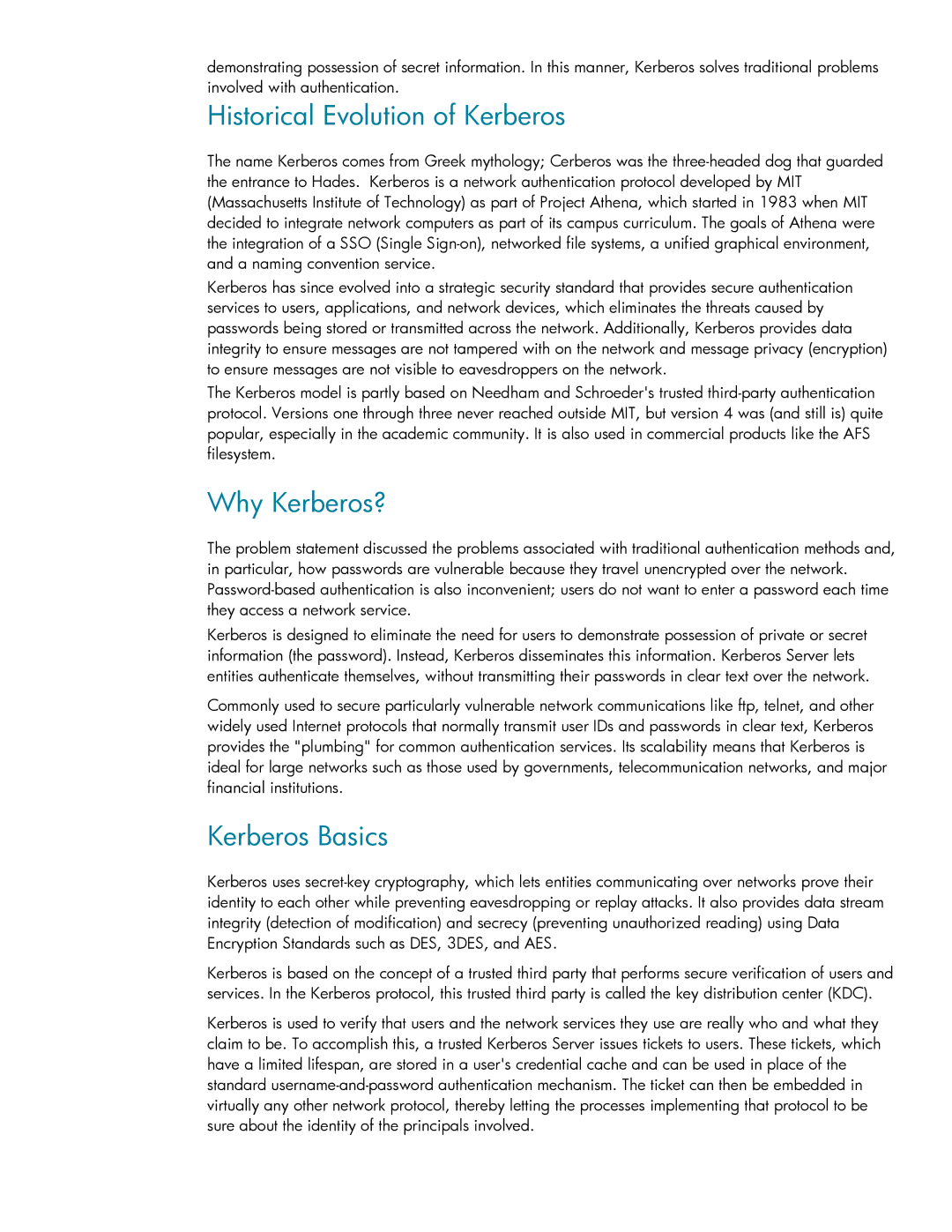demonstrating possession of secret information. In this manner, Kerberos solves traditional problems involved with authentication.
Historical Evolution of Kerberos
The name Kerberos comes from Greek mythology; Cerberos was the
Kerberos has since evolved into a strategic security standard that provides secure authentication services to users, applications, and network devices, which eliminates the threats caused by passwords being stored or transmitted across the network. Additionally, Kerberos provides data integrity to ensure messages are not tampered with on the network and message privacy (encryption) to ensure messages are not visible to eavesdroppers on the network.
The Kerberos model is partly based on Needham and Schroeder's trusted
Why Kerberos?
The problem statement discussed the problems associated with traditional authentication methods and, in particular, how passwords are vulnerable because they travel unencrypted over the network.
Kerberos is designed to eliminate the need for users to demonstrate possession of private or secret information (the password). Instead, Kerberos disseminates this information. Kerberos Server lets entities authenticate themselves, without transmitting their passwords in clear text over the network.
Commonly used to secure particularly vulnerable network communications like ftp, telnet, and other widely used Internet protocols that normally transmit user IDs and passwords in clear text, Kerberos provides the "plumbing" for common authentication services. Its scalability means that Kerberos is ideal for large networks such as those used by governments, telecommunication networks, and major financial institutions.
Kerberos Basics
Kerberos uses
Kerberos is based on the concept of a trusted third party that performs secure verification of users and services. In the Kerberos protocol, this trusted third party is called the key distribution center (KDC).
Kerberos is used to verify that users and the network services they use are really who and what they claim to be. To accomplish this, a trusted Kerberos Server issues tickets to users. These tickets, which have a limited lifespan, are stored in a user's credential cache and can be used in place of the standard
